
views
- Open the Control Panel in Windows to uninstall Chrome. Be sure to enable hidden files so you can delete all files associated with the browser.
- Reinstall Google Chrome on Windows or macOS by visiting google.com/chrome.
- Some Android devices may come preloaded with Google Chrome, in which case you will only be able to uninstall updates for the Chrome app.
Windows

Open the Control Panel. Before reinstalling Chrome, you'll want to uninstall the original copy. You can do this from the Control Panel.

Select "Uninstall a program" or "Programs and Features." The wording will vary depending on your current Windows version. This will open a list of your installed programs.
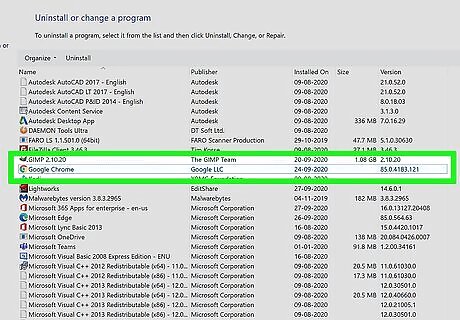
Find "Google Chrome" in the list of installed programs. By default, the list should be organized in alphabetical order.
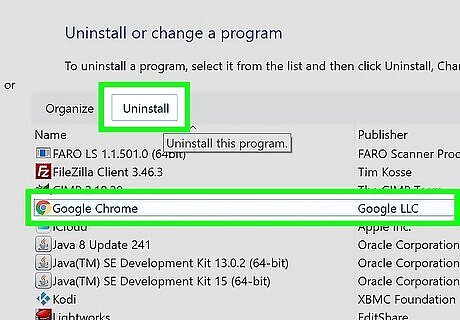
Select "Google Chrome" and click "Uninstall." You'll find the Uninstall button above the list of programs after selecting one.
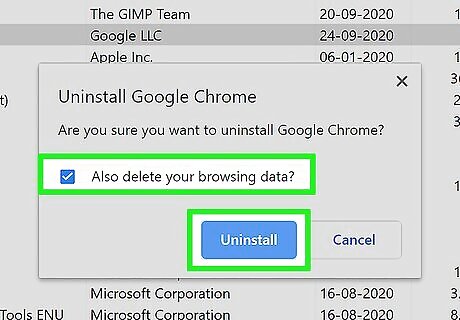
Check the "Also delete your browsing data" box. This will ensure that all of your data is deleted completely before installing a fresh copy of Chrome.
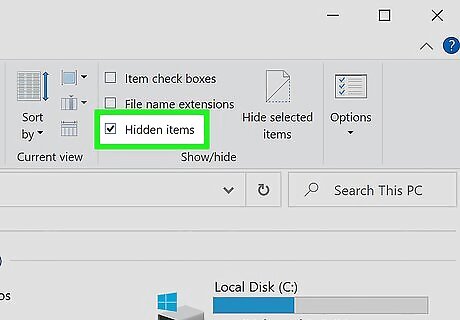
Enable hidden files in Windows Explorer. To completely eradicate Chrome data, you'll need to enable viewing of hidden files: Open the Control Panel and select Folder Options. Click the View tab and check "Show hidden files, folders, and drives." Uncheck "Hide protected operating system files."
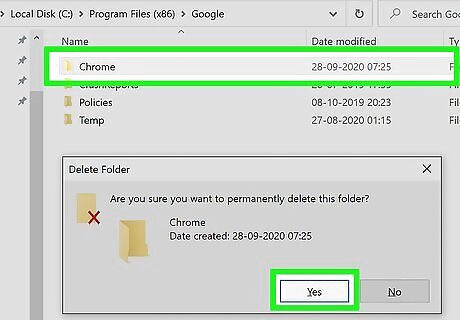
Delete the remaining Chrome files. Now that hidden files are visible, find and delete the following folders on your computer:
C:\Users\

Visit the Chrome website in another browser. Open Microsoft Edge or another installed browser and visit google.com/chrome.
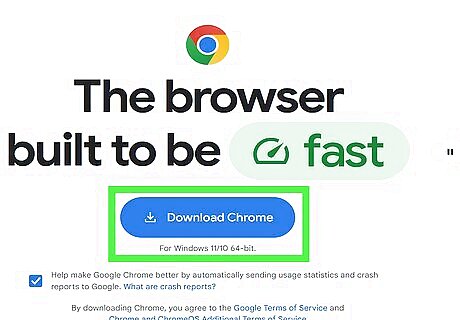
Click "Download Here". It should be written in blue text across the center of the page. A pop-up will appear with the terms and conditions. Consider checking the box that allows Google to receive crash and usage reports. This will help enhance your own Chrome experience, as well as that of others. Click Accept and Install. Your computer will download the necessary files and begin to run the installation wizard. Chrome will also set itself as the default browser after installation, which you can change by unchecking the box.
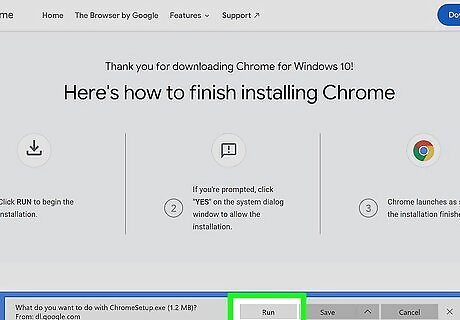
Click "Run" if prompted by Windows. This will allow your computer to download the installation files from Google.
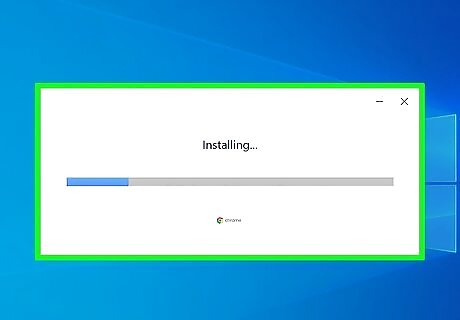
Wait while Chrome installs. The necessary files will download and Google Chrome's installer will begin. This installer will download more files, and then begin installing Chrome once the download is finished. If you are having problems running the online installer, download and run the alternate installer from Google.
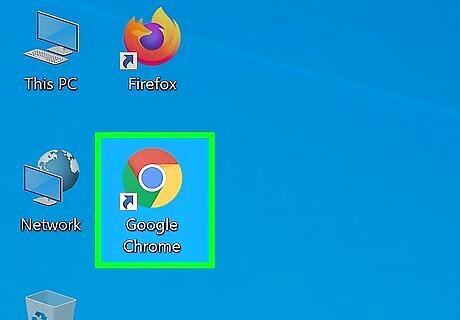
Start Chrome. When you launch Chrome after installing, you may be prompted to select your default browser. Choose Chrome or any other installed web browser on the list to make it the default browser for your computer.
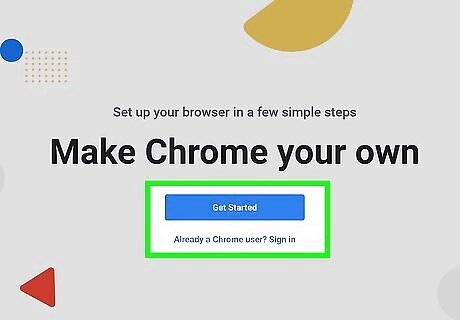
Sign into Chrome with your Google account (optional). After the Chrome window opens, you'll be taken to the sign in page. Signing into Chrome with your Google account allows you to sync your bookmarks, extensions, themes, saved passwords, and form data. This is not required in order to use Chrome.
macOS
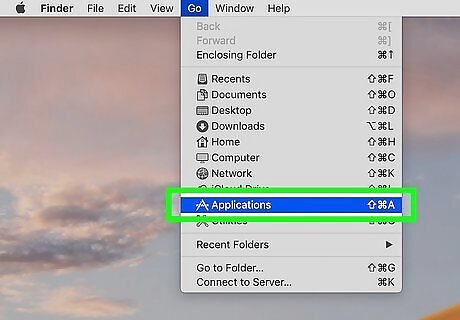
Open your Applications folder. Before reinstalling Chrome, you'll need to remove the old version. You can find this in your Applications folder.
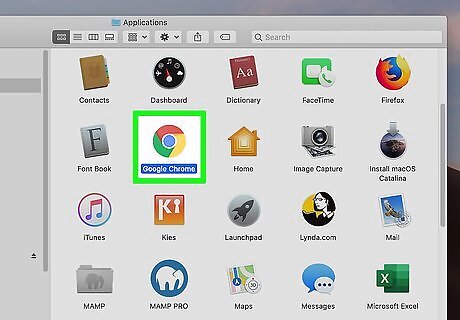
Find the Google Chrome app. It may be in the base Applications folder, or it may have been moved to another folder.
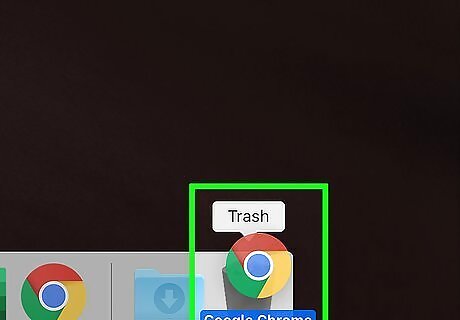
Drag Google Chrome to the Trash. Drag the app to the Trash to delete it from your computer.
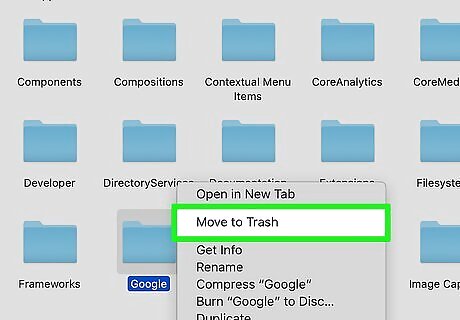
Delete your profile data. If you want to completely remove your Chrome data before reinstalling, you'll need to find and delete your profile. This will delete your preferences, bookmarks, and history. Click the Go menu and select "Go to Folder." Enter ~/Library/Google and click "Go." Drag the GoogleSoftwareUpdate folder to the Trash.
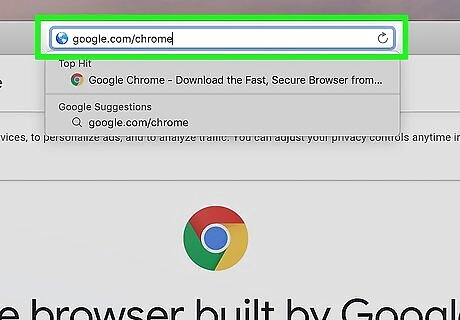
Visit the Google Chrome website in Safari. Open Safari or any other installed browser and visit google.com/chrome.
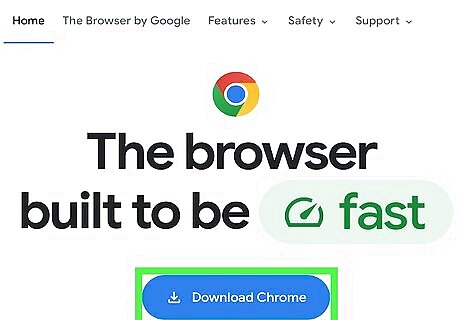
Click "Download Here". It should be written in blue text across the center of the page. A pop-up will appear with the terms and conditions. Consider checking the box that allows Google to receive crash and usage reports. This will help enhance your own Chrome experience, as well as that of others. Click Accept and Install. Your computer will download the necessary files and begin to run the installation wizard. Chrome will also set itself as the default browser after installation, which you can change by unchecking the box.
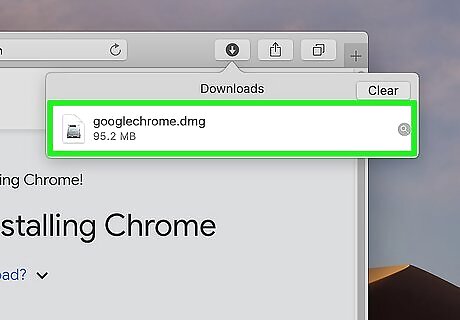
Open the "googlechrome.dmg" file after it has downloaded. It may take a few minutes to finish downloading.
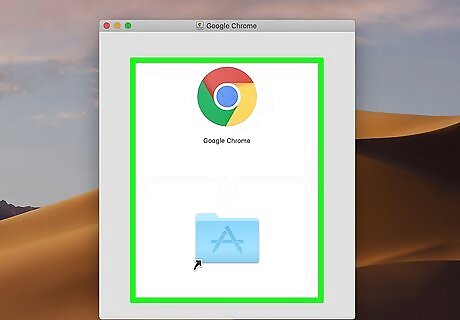
Drag the "Google Chrome.app" icon into the Applications folder icon. This will install Google Chrome to your Applications folder.
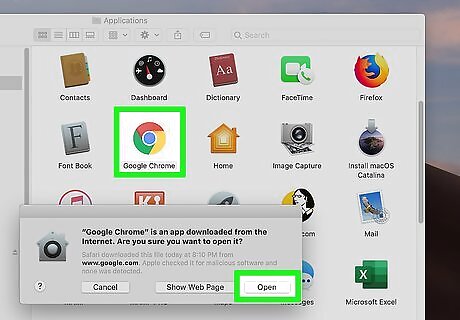
Launch Google Chrome from the Applications folder. If prompted, click "Open" to confirm that you want to start it.
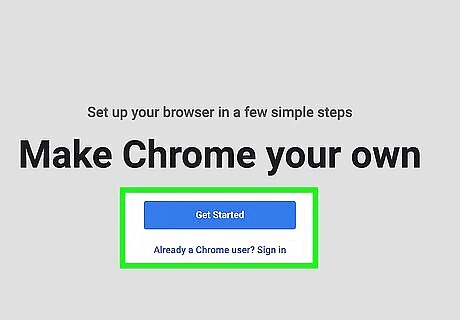
Sign into Chrome with your Google account (optional). When you first start Chrome, you'll be prompted to log in with your google account. This will sync your Chrome bookmarks, settings, themes, bookmarks, and extensions. This isn't required in order to start using Chrome.
iOS
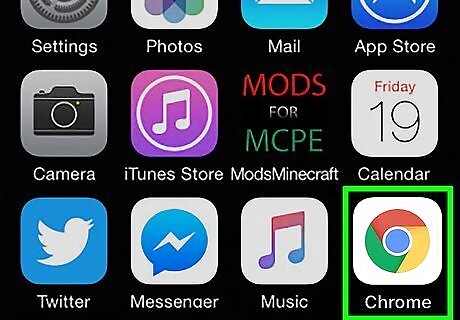
Press and hold the Chrome icon on your Home screen. After a moment, the icons will begin wiggling.
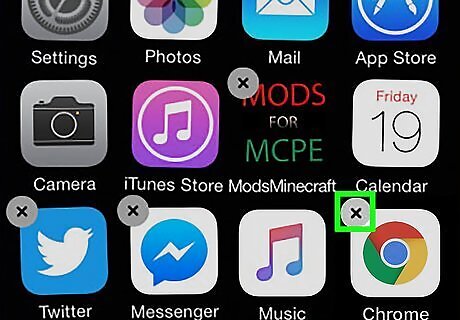
Tap the "X" in the corner of the Chrome icon. You'll be asked to confirm that you want to completely delete Chrome and all of its data.

Press the Home button to exit the app deletion mode. The app icons will stop wiggling and you'll be able to open apps again.

Open the App Store. Once Chrome has been deleted, you can download it again from the App Store.
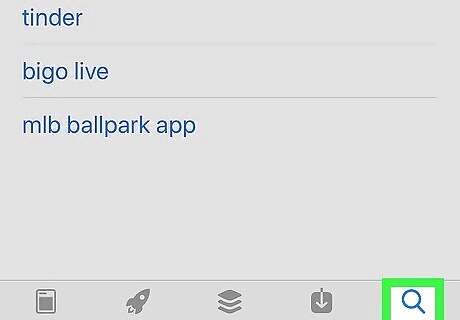
Search for "Google Chrome." It should be the first result for your app search.

Tap "Get" and then "Install." This will begin downloading the Chrome app to your iOS device. You may be prompted for your Apple ID password before Chrome begins downloading.
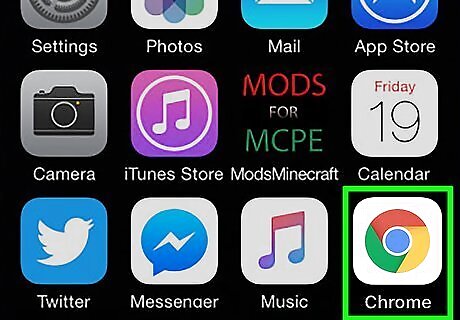
Launch the Chrome app. Once the app has finished installing, you can launch it by tapping the Chrome icon on your Home screen. This will open the Chrome browser.
Android
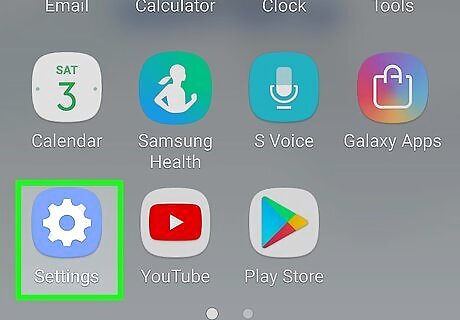
Open the Settings app. You can uninstall Chrome from the Settings app of your device. You won't be able to uninstall Chrome if it came installed on your Android.
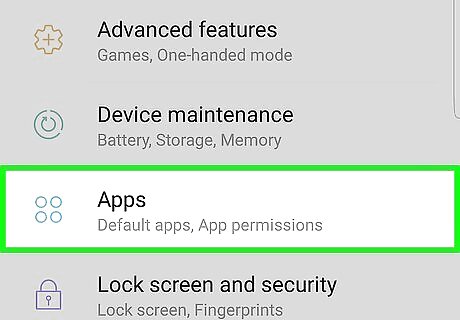
Select "Apps" or "Applications." This will open a list of applications installed on your Android device.
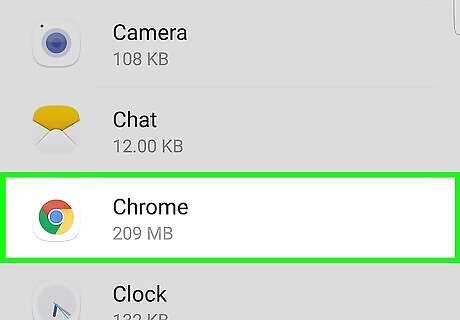
Tap "Chrome" in the list of apps. This will open the Chrome app details screen.
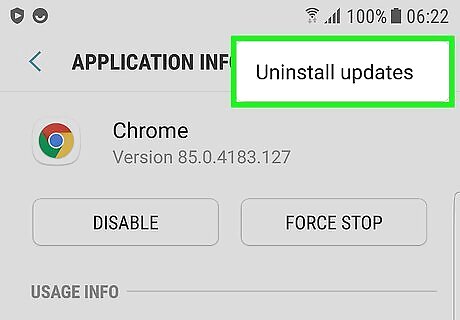
Tap "Uninstall" or "Uninstall Updates." If you see "Uninstall," you'll be able to remove Chrome completely from your device. If you see "Uninstall Updates," Chrome came preloaded and you can only uninstall subsequent updates. If you cannot uninstall Chrome, you will not be able to reinstall it either. Still, uninstalling updates and then updating the app again could help rectify any issues you may be experiencing.
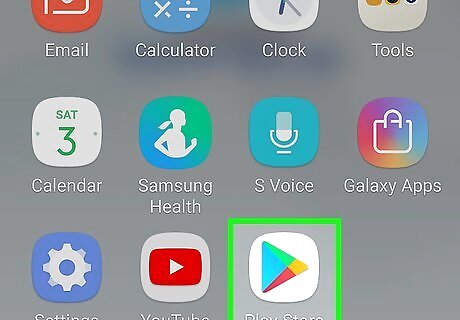
Open the Google Play Store after uninstalling Chrome. Once Chrome is removed, you can download it again from the Play Store.
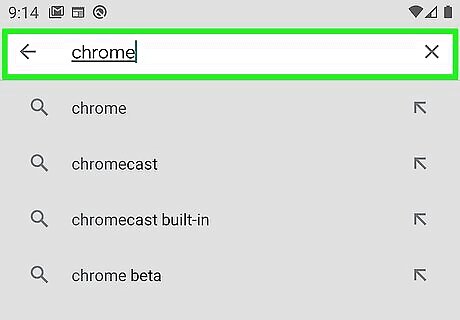
Search for "Chrome." Google Chrome should be the first result that appears.

Tap the "Install" or "Update" button. If you were able to completely remove Chrome, tap the Install button to download the latest version to your device. If you were only able to remove the updates, tap "Update" to download and install the latest updates.
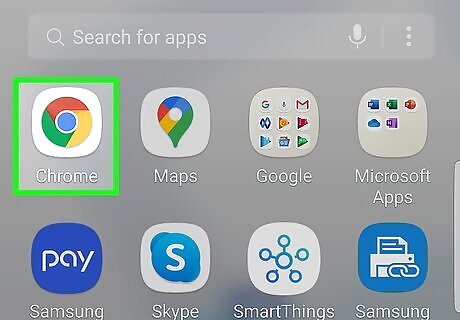
Launch Chrome. You can find Chrome in your device's App Drawer. Depending on your settings, you may be able to find a shortcut on your Home screen as well.



















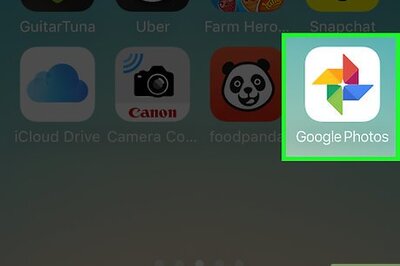
Comments
0 comment